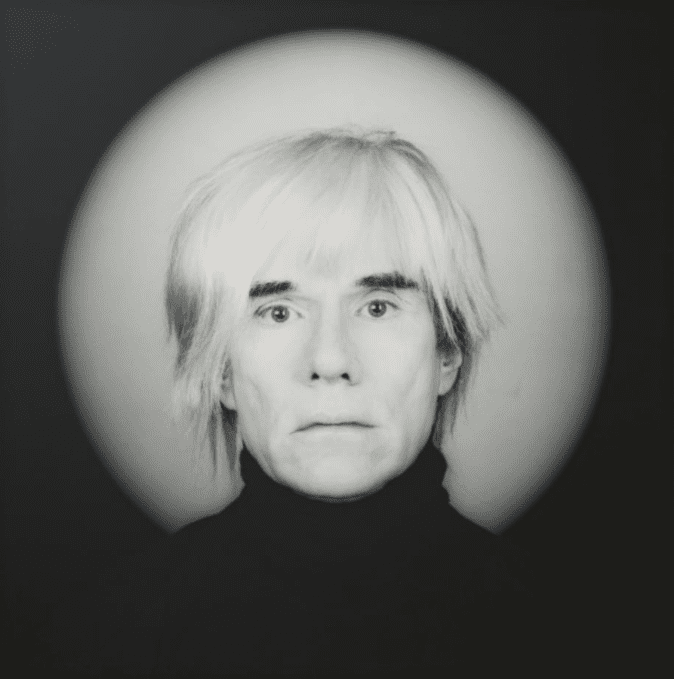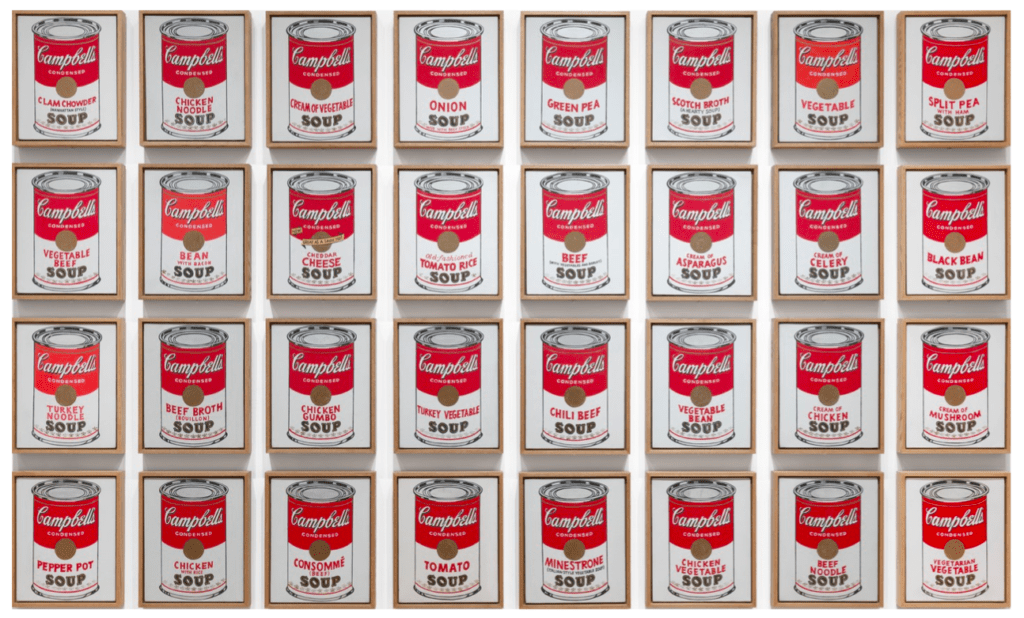
Mark-Making: 5 Abstract Painters You Need To Know
Trends in Contemporary Art
The Museum of Modern Art (MoMA) collection in New York consists of the most important masterpieces of modern art. Think of iconic works such as Vincent Van Gogh’s Stary Night from 1889, Pablo Picasso’s Les Demoiselles d’Avignon from 1907, or Salvador Dali’s Persistence of Memory from 1931. One by one, these artworks continue to enchant us with their beauty and iconicity.
Also, in the list of MoMA top-notch masterpieces, we find Andy Warhol’s Campbell’s Soup Cans from 1962. Wait. What? Did you say soup cans? Yes, soup cans. While Salvador Dali had melted clocks as one of his key motives, Andy Warhol implemented Cambell’s soup cans into his visual language. Even more, these soup cans have been sold for thousands, tens of thousands, hundreds of thousands, up to millions of US dollars throughout history.
But why? Why are these soup cans worth millions? Why would soup cans be art in the first place? How can be Campbell’s Soup Cans by Andy Warhol be a masterpiece in the same sense as Van Gogh’s Starry Night or Picasso’s Les Demoiselles d’Avignon? Welcome to Andy Warhol Explained: ‘Campbell’s Soup Cans.’
Andy Warhol, born in 1928 in Pittsburg, Pennsylvania, was an American artist with Austrian-Hungarian roots who passed away at age 58 in New York City in 1987. Warhol was a contemporary artist, film director, commercial illustrator, and producer best known for pioneering Pop Art in the 1960s.
A young Andy Warhol studied Commercial Art and made his first career steps in Pittsburg before moving to New York City in 1949 to successfully pursue a career in magazine illustration and advertising. He developed his characteristic blotted line technique, applying ink to paper and then blotting the ink while it was still wet. Using tracing paper, Warhol could repeat—and repeat—and repeat—basic images resulting in infinite variations of one particular theme or motif.

In the early 1950s, Warhol introduced himself to the New York art scene, resulting in some successful gallery shows, making a name for himself as a controversial yet intriguing artist, with ink drawings of, for instance, shoe advertisements and his first silk screens.
By 1962, the Museum of Modern Art hosted a symposium on the emergence of Pop Art. However, artists such as Warhol were attacked for their consumerism and open acceptance of market culture—these critical voices would be a continuum throughout his artistic career, albeit in decrescendo. In 1963, he relocated his studio to East 47th Street, a place known as The Factory, and the rest is history.
He was both lauded and rejected for his ever-growing set of capitalist symbols he elevated as art. Think of popular culture icons such as Marilyn Monroe, Elvis, and Elizabeth Taylor. But in particular, icons of capitalism; Heinz Tomato Ketchup, Kellogg’s Cornflakes, Brillo Box, and one of his earliest and most essential motifs; the Campell’s Soup Cans.
The very first time Andy Warhol showed his Soup Cans to the public was in 1962 in Los Angeles at Ferus Gallery. At this moment in time, Pop Art was on the rise. In Europe, we had the collages by Richard Hamilton and Eduardo Paolozzi, and in the States, collages by James Rosenquist and sculptures by Claes Oldenburg, Jasper Johns, and Robert Rauschenberg. By manner of humor, irony, and appropriation, symbols of popular culture were used as ready-mades in the tradition of Marcel Duchamp, commenting on mass production, consumerism, capitalism, and popular culture.
The cold and calculated visual language of Pop Art could be argued to be a counteraction too Abstract Expressionism’s gestural brushstrokes. Pop Artists pursued to make their work look machine-made instead of man-made to comment on the topics mentioned above. Nevertheless, even though the Soup Cans looked like they were made mechanically, every painting was slightly different and thus unique—a subtle and essential contradiction.
Campbell’s Soup was a part of Warhol’s diet for years, claiming he had the same lunch drinking Campbell’s Soup every day for 20 years. So it seemed like it was only a matter of time before Warhol would introduce them into his artistic practice, culminating in his first solo exhibition as a painter with his 32 Campbell’s Soup Cans in LA, showcasing the paintings installed on shelves instead of having them on the wall—creating another analogy with the supermarket.
Pop Art was still in its infancy, and this young and adventurous artist with a background in advertising instead of fine arts suddenly made a giant leap forward for the nascent art movement. As a result, the reception of his work was somewhat harsh, mocking Warhol and Ferus Gallery and even calling them soft-headed charlatans.

The sales could have been better too. Five of the thirty-two paintings were sold, primarily by friends and family, but the gallery director Blum repurchased them and bought all thirty-two paintings for just one thousand US dollars. A satisfying consolation prize for the artist and what would be the bargain of the century for the gallery director.
In the following years, Pop Art and Andy Warhol—who predominantly focused on silkscreen printing instead of painting after this show—rose in fame exponentially, and it became clear how exemplary and visionary the Cambell’s Soup Cans were in the end. As no other artist had done before, Warhol implemented the boldness and directness of advertising in a high art form such as painting. The references to mass culture were no longer a collaged fragment of the artwork; they became the main subject.
This radical approach implies a subtle tension between a celebration of Modern ideals and simultaneously questioning them. One could not help but notice the repetitive nature of this series, in which not only the viewer but also the consumer is being bombarded by the same image over and over again. Repetition and the implementation of mechanical processes were also finding their way into high art with Minimal Art throughout the late 1950s and early 1960s—think of Carl Andre or Donald Judd.
And simultaneously, the parallels with Conceptual Art, especially when Conceptual Art was manifesting itself as an art movement in the 1960s. One could even approach Cambell’s Soup Cans as a conceptual installation instead of a work of Pop Art. The aesthetics resemble Joseph Kosuth’s One and Three Chairs of 1965. We encounter language, repetition, and the use of a ready-made, albeit the can-design instead of a chair, and there is a clear conceptual foundation for questioning and celebrating consumerism.
As befits many great artists, Warhol radically went against the grain. Whereas high art used to be unique, man-made, and the opposite of popular culture, Warhol took something recognizable and familiar such as Soup Can, which stood in every kitchen in America, and elevated it to high art.
Warhol understood the potential of images with mass appeal, and by placing those ordinary symbols into an artistic context, they suddenly became icons—an icon of Warhol’s illustrious, an icon of Pop Art, and an icon of culture in Modern America.
So let’s go back to the Museum of Modern Art in New York. In 1996, the gallery director who bought the thirty-two pictures in 1962 for one thousand dollars sold and gifted them for a total value of 15 million US dollars. They passed the test of time, and today, they are one of the most iconic works of Modern Art by one of the undisputed most influential artists of the 20th century. A ‘canny’ conclusion, and certainly one to treasure.

Last Updated on August 1, 2023

Trends in Contemporary Art

A Complete Guide

Touching the Invisible

A Reasoned Anthology